Basic First Aid Tips for Common Injuries: Being Prepared for Accidents

Accidents and injuries can happen at any time, whether at home, work, or while participating in recreational activities. Having a basic understanding of first aid can make a significant difference in providing immediate care and potentially preventing further harm. In this blog, we will explore some essential first aid tips for common injuries, empowering you to be prepared for everyday accidents.
Cuts and Scrapes
- Control Bleeding: Apply gentle pressure to the wound using a clean cloth or sterile bandage. Elevate the injured area if possible to reduce blood flow. If bleeding is severe or doesn’t stop after a few minutes, seek medical help.
- Clean the Wound: Rinse the cut or scrape with clean water to remove any dirt or debris. Gently clean the area around the wound. Pat the area dry and apply an adhesive bandage or sterile gauze pad.
- Prevent Infection: Apply an over-the-counter antibiotic ointment or spray to reduce the risk of infection. Change the bandage regularly, keeping the wound clean and dry.
Burns
- Remove from the Source: Move the person away from the source of the burn, such as fire or hot liquid. If their clothing is on fire, remember to “Stop, Drop, and Roll” to smother the flames.
- Cool the Burn: Hold the affected area under cool (not cold) running water for about 10-20 minutes to reduce pain and prevent further injury. Do not use ice or icy water, as it can cause additional damage.
- Cover the Burn: After cooling the burn, cover it with a clean, non-stick sterile dressing or cloth. Avoid applying adhesive bandages directly to the burn, as they can stick to the wound.
Sprains and Strains
- Rest and Protect: Encourage the person to rest and protect the injured area from further strain or movement. Help them find a comfortable position and, if necessary, use splints or slings to immobilize the area.
- Apply Ice: Apply a cold compress or ice pack wrapped in a cloth to the affected area for about 15-20 minutes at a time, several times a day, to reduce pain and swelling. Remember to use a barrier (such as a cloth) between the ice and skin to prevent frostbite.
- Elevation: Elevate the injured limb above heart level, if possible, to reduce swelling.
Nosebleeds
- Sit and Lean Forward: Have the person sit down and lean slightly forward to prevent blood from flowing down the throat. Avoid tilting the head back, as it can cause blood to enter the stomach and potentially lead to nausea.
- Pinch the Nose: Pinch the soft part of the person’s nose, just below the bony bridge. Maintain pressure for about 10-15 minutes. Encourage the person to breathe through their mouth during this time.
- Apply Cold Compress: After the bleeding stops, apply a cold compress to the nose and the back of the neck to help constrict blood vessels and reduce the risk of recurrent bleeding.
Choking
- Ask and Assess: Ask the person if they are choking. If they can speak or cough forcefully, encourage them to keep coughing to try and clear the blockage. If they cannot speak or cough, or their cough becomes weak, take immediate action.
- Perform Abdominal thrusts: Stand behind the choking person, place your arms around their waist, make a fist with one hand, and place it just above the navel. Grasp your fist with your other hand and give quick inward and upward thrusts until the object is dislodged.
- Call for Help: If the person remains unresponsive or the obstruction is not cleared after several attempts, call emergency services and continue providing CPR if necessary.
Conclusion
Having a basic understanding of first aid can empower you to provide immediate care in the event of common injuries. Remember that these tips are not a substitute for professional medical help. Always seek medical assistance for severe injuries or if the person’s condition worsens. By being prepared and knowledgeable about first aid, you can make a difference in ensuring the well-being of yourself and those around you. Stay safe and be ready to respond to everyday accidents with confidence.
Need to understand these concepts better? Emergency First Aid training or Standard First Aid Training provides LIFE SAVING skills.

Kathryn Davies
Author, Owner Life’s Emergency Training


